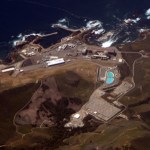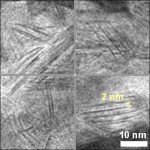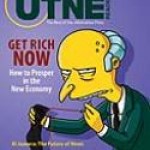renewable energy
The Republican line is this: Bring back coal, shut down development, subsidies, any encouragement at all, for solar and wind energy.
There is absolutely no logic to this policy, but it is in fact the policy. The reason for it is generally thought to be that the big rich corporations and individuals that control coal and petroleum resources, and that are fully engaged in delivery of those energy sources (and other materials, such as plastic bags made of petroleum) pay off the politicians to support their businesses. And that is true, they do this. But that does not explain why regular…
The decision by PG&E to mothball the last operating nuclear reactors in California has some people cheering—and other pounding their fists. On Significant Figures, Peter Gleick writes that the closure of Diablo Canyon Nuclear Plant "rankles those who see all non-carbon energy sources as critical in the fight against the real threat of climate change." Yet Gleick argues that with the pitfalls of nuclear energy and the high costs of retrofitting the plant, it is appropriate to shut it down and focus on developing wind and solar capacity. Meanwhile, Greg Laden considers the risk a major…
Diablo Canyon Nuclear Power Plant, courtesy PG&E
The announcement that Pacific Gas and Electric (PG&E) will close the Diablo Canyon Nuclear Plant when its current operating licenses expire in 2025 has caused what can only be described as consternation mixed with occasional conniptions among the nuclear industry and some strongly pro-nuclear groups.
That’s understandable. Diablo Canyon is aging, but is not the oldest nuclear plant in the fleet and PG&E could have chosen to push for a renewal of the license to continue operations for many more years. Diablo Canyon’s two reactors…
By Peter Gleick (Pacific Institute) and Carl Ganter (Circle of Blue)
1. The California Drought Becomes an Emergency
California’s multi-year drought grew dire enough in 2014 to prompt Governor Jerry Brown to declare a drought emergency in January. By the end of the year, California had experienced the driest and hottest 36 months in its 119-year instrumental record. Some researchers described the drought as 1) the worst in over 1200 years and 2) evidence of rising temperatures globally as climate changes accelerate. As of mid-January, the drought is continuing.
As the California and…
Solar cells made with bismuth vanadate achieve a surface area of 32 square meters per gram. This compound can be paired with cheap oxides to split water molecules (and make hydrogen) with record efficiency.
Short-term geoengineering could postpone global warming, only to have it happen more quickly in the future.
Carotenoids tinge blackbird bills a deep orange, signalling fitness; birds with oranger bills are "are heavier and larger, have less blood parasites and pair with females in better condition than males with yellow bills."
Fibroblasts can extrude a tidy biological…
John Abraham has an interesting post up at the guardian called "Global warming action: good or bad for the poor?" It is a response to a post by a group of guys who tend to write annoying stuff about climate change (you can go to John's post for that information). Here, I want to make a brief comment related to John's excellent post.
The crux of John Abraham's post is this, in two parts: 1) Some have argued that mitigation against climate change is bad for "the poor" (read: people in developing countries) because they have a right to go through the same phases of technological and social…
With nanotechnology rapidly advancing, the sci-fi dream of a Star Trek replicator becomes increasingly less fantastic. But such radical technology would, in theory, require the kind of subatomic manipulation that far exceeds current capabilities. Scientists lack both the equipment and the fundamental knowledge of quantum mechanics (the Standard Model, for all its elegance, remains incomplete) to build items from the raw stuff of quarks, gluons, and electrons . . . but what about alchemy?
Even Isaac Newton, credited with the dawn of the Age of Reason, felt the mystical draw of alchemy,…
OK. Taking on logical flaws in Wall Street Journal op-ed items is about as difficult as shooting fish in a barrel, but I can't let Matt Ridley's latest affront to common sense pass without firing off a few rounds for practice if nothing else.
Under a staggeringly unimaginative headline of "Inconvenient Truths About 'Renewable' Energy," Ridley argues that renewable energy isn't really renewable, or at least no more renewable that fossil fuels. How does he go about this without shattering his backbone? By pointing out that Haitians are destroying their half of their island home by cutting down…
The theory, of course, is that eventually an inflection point in renewable production *might* be achievable, after which point total gobal energy consumption would decline. The fact, unfortunately, is that we're nowhere near achieving such an inflection point, as Tad Patzek carefully points out:
The rate of energy use and carbon dioxide emissions are virtually identical and have grown exponentially over the last 40 years.
The impact of large dams and nuclear power plants has been barely visible, and disappeared by 2007.
The renewable energy sources, wind turbines, biomass cogeneration, and…
Sitting back today looking at news and webcams in my former home of Colorado had me also reflecting on the events that conspired to put me in North Carolina. This unexpected turn in my life also opened me up to a local community of remarkably creative people with national and international reputations in their respective fields.
One of these people whom I am fortunate to call a local hero is journalist Barry Yeoman. Barry was described in the Columbia Journalism Review as, "(One of) the best unsung investigative journalists working in print in the United States.... Yeoman specializes in…
I was just laboring over a post designed to explain the relationship between energy returned over energy invested and the importance of the *rate* of that return for our expectations about future resources, when I found out that Dr. Tom Konrad had already done this - yay! I think this is a useful and clear way of articulating the problems of future renewables. While I don't agree with all Konrad's conclusions as they are expressed (more on that in a second), I think he makes the relationship between EROEI and Rate of Return very clear and does so in a remarkably useful way. He writes:
The…





